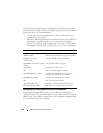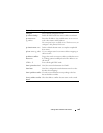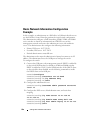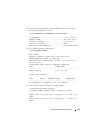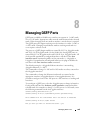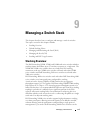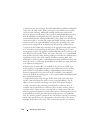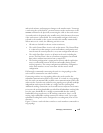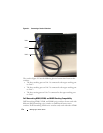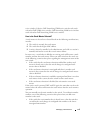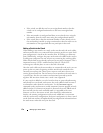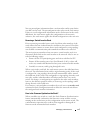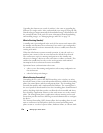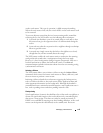
172 Managing a Switch Stack
stacked using any port as long as the link bandwidth for parallel stacking links
is the same. In other words, all the port types on the N4000 series switches
can be used for stacking. Additional stacking connections can be made
between adjacent switch units to increase the stacking bandwidth provided
that all redundant stacking links have the same port speed. It is strongly
recommended that the stacking bandwidth be kept equal across all stacking
connections; that is, avoid mixing single and double stacking connections
within a stack. Up to eight redundant stacking links operating at the same
speed can be configured on an N4000 stack unit (four in each direction).
A stack of twelve N4000 series switches has an aggregate front panel capacity
of 5.760 terabits (not including the 40G ports). Provisioning for 5% inter-
stack capacity requires 280 gigabits of bandwidth dedicated to stacking or all
four 40G ports plus another twelve 10G ports. Therefore, it is recommended
that operators provision large stacking topologies such that it is unlikely that a
significant portion of the stack capacity will transit stacking links. One
technique for achieving this is to distribute downlinks and transit links evenly
across the stack vs. connecting all downlinks/transit links to a single stack unit
or to adjacent stacking units.
If Priority Flow Control (PFC) is enabled on any port in an N4000 series
stack, stacking is supported at distances up to 100 meters on the stacking
ports. If PFC is not enabled, stacking is supported up to the maximum
distance supported by the transceiver on the stack links. Note that PFC
cannot be enabled on stacking ports — the system handles the buffering and
flow control automatically.
A single switch in the stack manages all the units in the stack (the stack
master), and you manage the stack by using a single IP address. The IP
address of the stack does not change, even if the stack master changes.
A stack is created by daisy-chaining stacking links on adjacent units. If
available, up to eight links per stack unit can be used for stacking (four in
each direction). A stack of units is manageable as a single entity when the
units are connected together. If a unit cannot detect a stacking partner on any
port enabled for stacking, the unit automatically operates as a standalone
unit. If a stacking partner is detected, the switch always operates in stacking
mode. One unit in the stack is designated as the stack master. The master
manages all the units in the stack. The stack master runs the user interface



